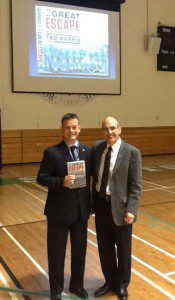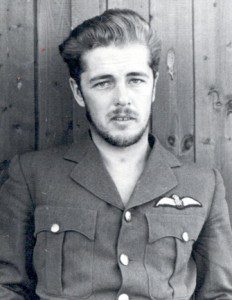
Maybe it’s the distance they have to travel from the centre of the country to where they live. It might be that they joined Canada (in 1905) later than did the original constituencies of Upper and Lower Canada. Or, quite possibly, it’s something in the air they breathe or the water they drink out there. But last week, when I asked a young Calgary woman how she felt about Canada, here’s what she said:
“My sense of Canada,” she said, “is that a lot more needs to be taught for the country to be understood by its people.”
On Friday morning, I delivered a kind of keynote address to the Calgary Catholic school board on the subject of experiential learning. I offered about 100 high-school teachers some insights about how to help history come alive. And indeed, the teacher I mentioned was absolutely right. Canadians aren’t taught enough about Canada these days. Ironically, the conditions under which I delivered my talk were not the most conducive to learning either; the teachers in my audience sat in bleachers in a basketball gymnasium at St. Mary’s High School in southwest Calgary.
“My job,” I told them last Friday morning, “is to help you forget that you’re sitting on hard, wooden bleachers in a high school gym.”
But I went on to suggest that my challenge was not unlike the job they faced every day – getting students figuratively out of their classroom chairs and literally excited about history, in particular, Canadian history. As many of you know, I can get pretty animated when I talk about people who’ve witnessed historical events – these days the Canadian participants in the Hollywood myth known as “The Great Escape.” And when I offered the story of one of their own, a Calgarian named Barry Davidson, that seemed to seal the deal.

“He learned to fly with a one-hangar flying club at the Calgary airport in 1937,” I explained. “And when he got his private pilot’s licence, he immediately offered his services to Gen. Chiang Kai-shek, who was looking for pilots to defend Nationalist China. But the general turned him down. So instead, Davidson joined the RAF and was shot down over occupied Europe in 1940, instantly becoming a prisoner of war for the rest of the war.”
I’m a firm believer in putting a face on history. If teachers can make a historical figure come alive in the classroom – with an artifact, a letter, photograph or a well-researched yarn, they give students a way to connect. I also believe such work should be mandatory; in other words, I would make Canadian history as much a core subject as math, science and English literature. In Canada, we may be separated inextricably by geography, but we can help our history shrink the distances and bind young minds and hearts to the stories of their towns, their forefathers and their heroes, if curriculum and school managers give teachers ample opportunity to deliver Canadian history right between the eyes of every kid in the country.
Ironically, I think Alberta is one of only three education jurisdictions where history curriculum is mandatory. In other words, I was preaching to the converted last Friday in Calgary. Part of the additional problem is the means of delivering the history too. Today, most young people have too much information at their disposal – thanks to social media and the internet. They’re also quite frankly too wrapped up in the world of “me,” whether it’s YouTube, their following on Twitter and Facebook or shooting “selfies” at every opportunity. On one hand I think most teachers would encourage such self-expression. On the other, always pointing the world’s cameras and attention inward might make even the most altruistic Canadians far too preoccupied with themselves to realize there’s more to the country than what’s happened in the lifetime of a 16-year-old.
When he was still a teenager in 1940, Calgarian Barry Davidson had joined the Royal Air Force, become a pilot officer and first combat operations over occupied France. On July 6, on just his second flight with an RAF bomber squadron, Davidson’s Blenheim aircraft was shot down. From his POW prison cell in Germany he sent a first letter home to his parents.
“Looks like I am in cold storage for the duration,” he wrote.
Only for Davidson, the adventure of his wartime experience – as the famous “scrounger” at the famous Stalag Luft III “Great Escape” camp – was just beginning. And as I offered Davidson’s story to the history faculty in Calgary last week, I asked the women teachers in the audience who Pilot Officer Davidson reminded them of.
“Why Brad Pitt, of course!” one blurted out.
Then, it hit me. Maybe that’s what we’ve been missing in the presentation of Canadian history to young people – selling the sizzle of our heroes as much as the substance. Maybe Hollywood has it right after all.